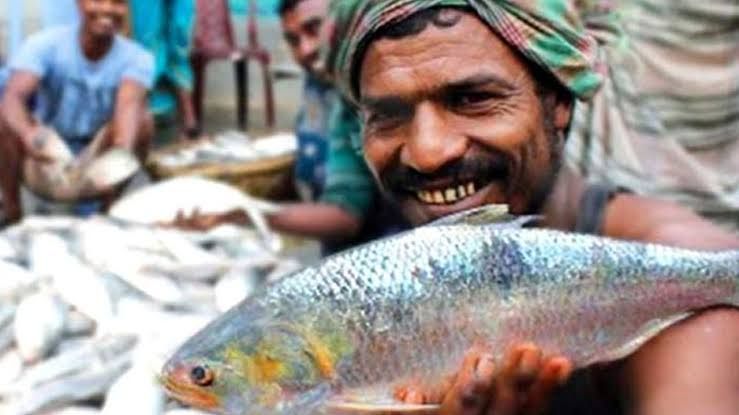
Bismillaher Rahmanir Rahim.
Assalamu Alaikum Wa Rahmatullahi Wa Barakatuhu
Dear Companions Today I want to share with you some words about the evils of killing foetuses.Welcom to this post and congratulations to all
The silver hilsa (Tenualosa ilisha), often referred to simply as hilsa, is not only a culinary delicacy but also an economic powerhouse in the regions of Bengal, which includes both West Bengal in India and Bangladesh. Revered for its exquisite taste and delicate texture, hilsa holds a cultural, historical, and economic significance that is deeply interwoven with the daily lives of millions in the region. In Bangladesh, particularly, hilsa is regarded as the "national fish" and is intricately tied to the nation’s heritage, lifestyle, and, most importantly, its economy.
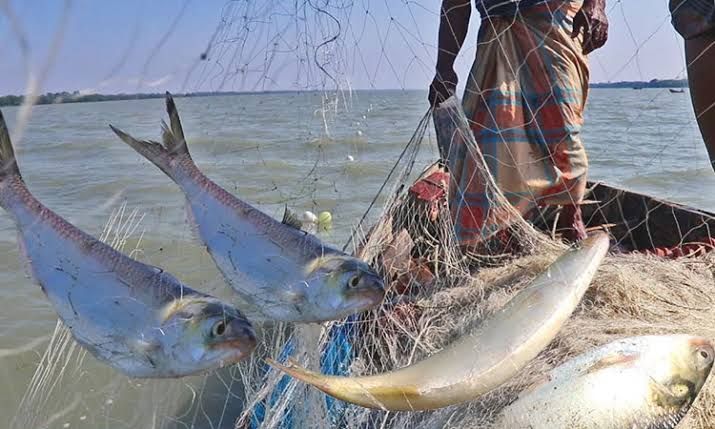
source
Historical and Cultural Significance of Hilsa
For centuries, hilsa has been central to the culinary traditions of Bengal. The fish has found mention in various literary works, religious practices, and social customs. Bengali festivals, such as Pohela Boishakh (the Bengali New Year), are incomplete without traditional hilsa dishes. Due to its historical importance, hilsa has transcended from being a mere food item to becoming a symbol of identity, pride, and tradition.
This deep-rooted cultural attachment makes hilsa not just a product of commercial value but also one of immense emotional significance. As a result, the demand for hilsa has remained consistently high across generations, not only in domestic markets but also among expatriates who long for a taste of home.
Economic Contribution of Hilsa in Bangladesh
The contribution of hilsa to the economy of Bangladesh is vast. It is one of the country's most important fish species in terms of both consumption and revenue generation. According to recent data, hilsa contributes around 12-13% to the total fish production in Bangladesh, and it accounts for about 1% of the country’s GDP. The fish provides employment to around 2.5 million people directly and indirectly, making it a vital component of rural livelihoods. The hilsa industry includes fishers, traders, processors, and sellers, all of whom rely on the yearly harvest for their income.
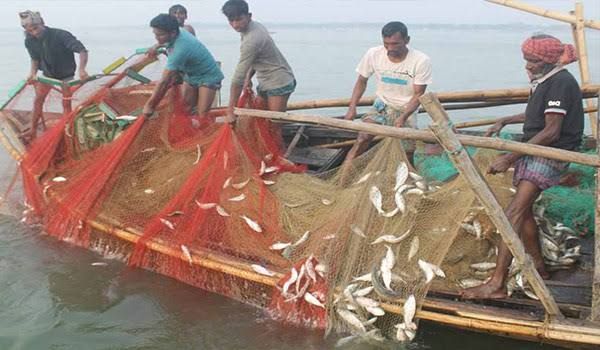
source
The international market for hilsa is also growing. Hilsa exports, especially to India, have become an essential part of the fish's economic contribution. In particular, the export of hilsa during festivals, such as the Durga Puja in West Bengal, brings in significant revenue for Bangladesh. Due to trade restrictions in the past, hilsa became even more of a sought-after commodity, further raising its value in international markets.
The demand for hilsa is not only driven by domestic consumption and cultural factors but also by its nutritional profile. The fish is rich in omega-3 fatty acids and essential nutrients, making it a healthy food option for consumers. As awareness of healthy eating habits grows, the demand for hilsa in international markets is expected to rise, adding further export potential for Bangladesh.
Sustainable Hilsa Fishing and Conservation Efforts
While hilsa remains a cornerstone of the Bangladeshi economy, overfishing and environmental changes pose significant challenges to its sustainability. Over the years, hilsa populations have fluctuated due to indiscriminate fishing, particularly of juvenile hilsa, locally known as jatka. As a response to declining hilsa stocks, the government of Bangladesh has implemented several measures aimed at conserving the species and ensuring its sustainable harvest.
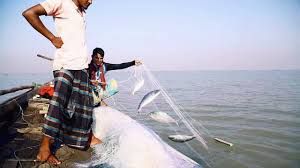
source
One of the most notable initiatives is the annual fishing ban during the breeding season. This ensures that mature hilsa can spawn and replenish the population. The government has also introduced jatka protection programs that prohibit the capture of young hilsa, providing alternative livelihoods to fishers during the ban periods. Fishers are compensated with rice and other essentials to reduce their economic burden during the no-fishing period.
These efforts have shown promising results, with hilsa production seeing a steady rise in recent years. The success of these conservation strategies is a testament to the fact that sustainable fishing practices can go hand-in-hand with economic growth.
Hilsa in the Global Market
Although Bangladesh is the largest producer of hilsa, the fish has a strong presence in international markets, particularly in India, where West Bengal’s culinary traditions have similar hilsa-based dishes. Expatriate communities from both Bangladesh and India are significant consumers of hilsa, particularly in regions with large diasporas such as the Middle East, the United States, and the United Kingdom.
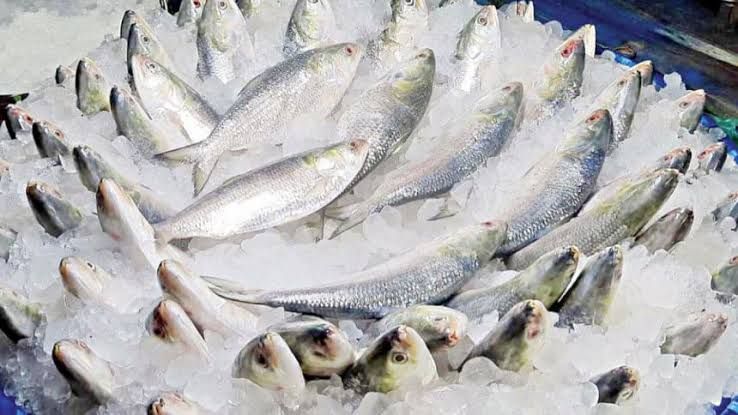
source
The fish's export potential is immense, but challenges remain. One significant hurdle is maintaining the quality of the fish during transport. Hilsa is known for its quick perishability, and ensuring that it reaches foreign markets in prime condition requires substantial investment in cold storage and transportation infrastructure. Recent advances in refrigeration technology and preservation techniques have, however, enabled Bangladesh to expand its hilsa exports successfully.
Moreover, the government has been working towards ensuring that hilsa meets international food safety standards to tap into markets in Europe and North America. Proper branding and promotion of hilsa as a premium fish product could help Bangladesh capitalize on its untapped export potential, particularly in health-conscious markets.

source
The Economic Potential of Hilsa: Looking Ahead
The hilsa fishery has vast untapped potential that could significantly boost Bangladesh’s economy. However, maximizing this potential requires a multi-faceted approach that balances the immediate need for economic growth with long-term sustainability. The conservation measures already in place are a step in the right direction, but further investment in modernizing the hilsa fishery is necessary.
Infrastructural improvements, such as cold storage facilities, improved transportation logistics, and better market access, will help increase the export value of hilsa. Further, branding initiatives that highlight hilsa’s cultural and nutritional value could open up new markets internationally. The demand for high-quality seafood is rising globally, and Bangladesh is well-positioned to become a leading exporter of hilsa.
Moreover, the socio-economic benefits of hilsa fishing, particularly in rural areas, should not be underestimated. The fishery provides livelihoods to millions of people in Bangladesh’s coastal and riverine communities. With the right policies in place, the hilsa industry can be a powerful tool for poverty alleviation and rural development.
source
The silver hilsa is much more than just a fish; it is a vital economic asset for Bangladesh and Bengal. Its cultural significance, coupled with its growing demand both domestically and internationally, makes it an invaluable contributor to the economy. With sustainable practices, improved infrastructure, and strategic market expansion, hilsa has the potential to become a multi-billion-dollar industry for Bangladesh, providing livelihoods to millions and contributing significantly to the nation's GDP. The future of hilsa is bright, but it requires careful stewardship to ensure that its economic and ecological benefits are preserved for generations to come.
Upvoted. Thank You for sending some of your rewards to @null. Get more BLURT:
@ mariuszkarowski/how-to-get-automatic-upvote-from-my-accounts@ blurtbooster/blurt-booster-introduction-rules-and-guidelines-1699999662965@ nalexadre/blurt-nexus-creating-an-affiliate-account-1700008765859@ kryptodenno - win BLURT POWER delegationNote: This bot will not vote on AI-generated content